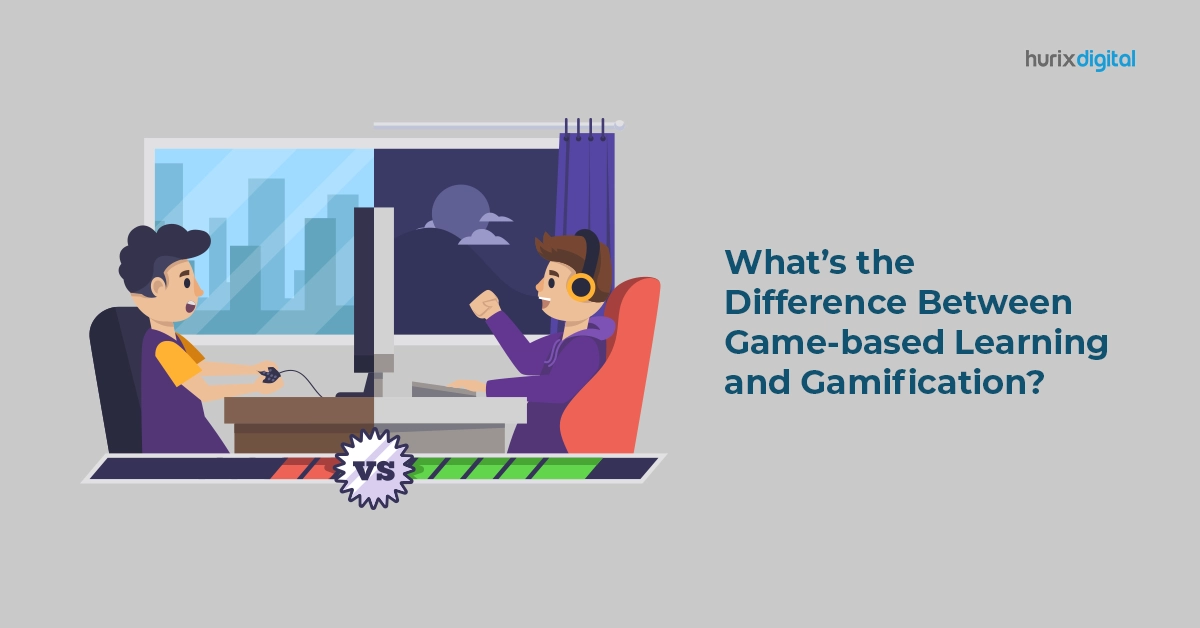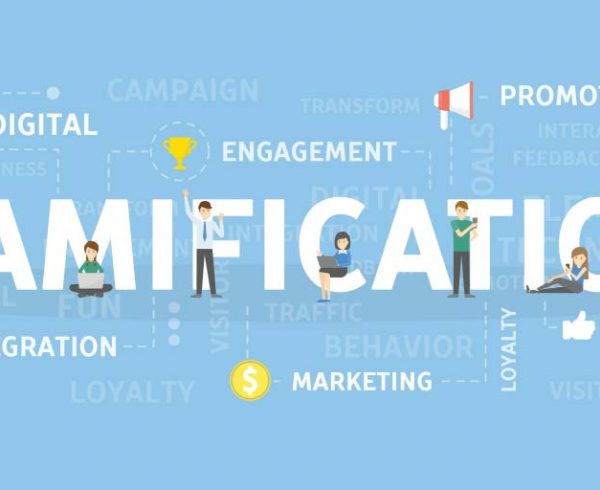Games! The word conjures up images of kids glued to their screens for hours. Very rarely does it bring up images of adults engaged in serious work. Nonetheless, gamification benefits for employees have become instrumental in helping them acquire new skills at the workplace. Games have evolved to become powerful tools in a trainer’s arsenal.
This post explores the benefits of gamification in employee training and why it is not just a passing trend.
Table of Contents:
- What is Gamification?
- What are the Best Gamification Features for Employees?
- Top 11 Advantages of Gamification
- Final Thoughts
What is Gamification?
Gamification uses game design techniques and mechanics to engage and motivate people to achieve their goals. These techniques can be applied in various settings, such as education, marketing, and employee training. Gamification in training can make activities that may be dull or tedious more engaging and can increase motivation to complete tasks.
Some examples of gamification in corporate learning include using points, badges, and leaderboards in a workplace setting to encourage friendly competition among employees and to incorporate game-like elements into education software to make learning more interactive and fun.
Read Also – Gamification in Learning: 7 Powerful Strategies to Implement
What are the Best Gamification Features for Employees?
There are several ways that gamification can be used to engage and motivate employees in the workplace:
- Leaderboards: A leaderboard can rank employees based on performance or other metrics, such as attendance or sales. Leaderboards can create a sense of friendly competition among employees and motivate them to perform better.
- Badges and Rewards: Employees can be given badges or other forms of recognition for achieving certain milestones or completing tasks. These rewards can be tangible (such as gift cards or extra vacation days) or intangible (such as recognition in front of their colleagues).
- Quests and Challenges: Employees can be presented with specific quests or challenges that align with their role or area of expertise. These can be used to motivate employees to learn new skills or to achieve specific goals.
- Gamified Training: Gamified training uses game-like elements to make training more interactive and engaging. This can make learning more effective and increase motivation to complete the training.
- Feedback and Progress Tracking: Giving employees feedback on their progress and providing a way to track their progress can help increase engagement and motivation.
- Gamified meetings: It makes meeting interactive and engaging by implementing game mechanics, which can make the meeting more productive.
These are just a few examples of how gamification can be used in the workplace. The specific gamification features implemented will depend on the organization’s goals and objectives and the employees’ needs.
Read Also – How To Use Gamification In Your Corporate Microlearning?
Top Advantages of Gamification and Serious Games in Employee Training Process -
1. Games normalize constant feedback
One of the biggest benefits of gamification in the workplace is the inflow of feedback to the employees. In a gaming environment, employees get used to immediate feedback. They find out if they’re losing or winning in real time. Based on this instantaneous feedback, they know if they’re falling behind or reaching their goal.
The very nature of gamification is a massive boost to your employees’ motivation level. Instead of dreading feedback (often experienced in conventional training methods), they crave it.
If you gamify your training program, your employees will not view feedback as an intrusion. They will rather consider it as a necessity. Therefore, serious games normalize instantaneous feedback at the workplace.
2. Serious games make learning easy
Traditional training modules are not quite helpful in teaching skills necessary for real-life situations. Well-designed serious games can fill this gap by offering an interactive environment where employees can learn practical skills and concepts to solve real-world problems.
Based on the training goals that need to be achieved, you can customize the games to create different scenarios. If you don’t have a coding background, Hurix can develop customized, highly interactive games for training your workforce.
Also Read – 5 Effective Gamification Strategies at Work for Enthralling Engagement
3. Interactive learning games keep the learner engaged
Employee training is undoubtedly an uphill task. Considering the declining motivation level among the employees in most organizations, it becomes even more difficult. The good news is, things are changing for the better.
Thanks to the advent of gamification and serious games, employees can reap the benefits of gamification in training to gain new skills, while staying motivated. The challenges infused in eLearning games and the rewards offered for the right efforts keep the training engaging for employees.
Like the Angry Birds game, eLearning games have different levels, increasing complexities, and continuous challenges. Every time someone fails, they can try again with a better strategy. All these factors ensure that your employees complete the training at a higher motivation level.
4. Games establish an emotional connection
How many conventional training modules can establish a strong connection with the employees? The answer is not encouraging. But that is not the case with gamified learning modules.
Employees feel invested with their “virtual self” as they unlock rewards while progressing levels. They don’t take a laid-back approach while learning and try not to make mistakes along the way.
Besides, the employee’s virtual character can be personalized by adding their name and employee ID number, changing their avatars, etc. Such steps help establish an emotional connection with the training program.
5. Games encourage multi-tasking
Given the nature of today’s workplaces and jobs, most employees must juggle multiple responsibilities simultaneously. By incorporating serious games that mimic real-life workplace scenarios, you can enable employees to learn the art of multitasking.
For instance, while playing a game, they must dodge the oncoming invaders and falling objects and reach their final destination. Therefore, eLearning games encourage multitasking in a highly interactive and engaging environment.
6. Games promote knowledge sharing
When training is delivered through gamified solutions, employees feel encouraged to talk about it. A newly launched game is enough to create the hype.
Informal discussions on achieving the objectives, passing the levels, and forming new strategies are bound to happen in gamification. Such discussion bodes well for promoting knowledge sharing within the organization.
You can further nurture knowledge sharing by forming discussion groups and forums dedicated to the gamified training module. This would allow the more reserved employees to open up and discuss things freely with other learners.
7. Games build problem-solving skills
What better way to inculcate crucial problem-solving skills than to provide gamified training? eLearning games allow employees to visualize difficult-to-solve problems and find their solutions.
A virtual environment eliminates the fear of failure as employees keep trying until they achieve the results. For instance, the game’s objective can be deciding the priorities, planning the budgets, or deciding the order quantity.
8. Games improve performance
If the conventional training methods are not doing much for employee performance, it’s time to make the transition to gamification. Serious games allow employees to rectify their mistakes in subsequent attempts.
Conventional training does not offer much scope for improvement, and it can quickly add to the costs. On the other hand, an employee can always replay the game to master the learning process.
9. Games foster creativity and innovation
Through gamification, employees can be challenged to think outside the box while facing high-stake situations virtually. You can introduce multiple variables into the serious game to familiarize them with the most perplexing problems they can encounter in the real world.
For this reason, eLearning games are great for promoting innovation and creativity in the workplace.
10. Games are addictive
This benefit may seem counter-intuitive. While addictive games may not be considered good for teenagers, they are highly effective in corporate training.
Your employees will find themselves returning to the game time and again – feeling excited while doing so. More often than not, the completion of training modules becomes a huge problem in conventional learning.
On the other hand, in serious learning games, employees have the necessary motivation to finish the training all the way through.
11. Games offer objectivity
Thanks to gamification, you have access to objective performance data. You no longer have to rely on managers’ feedback to evaluate performance, which runs the risk of biases. The performance evaluation would be based on hard data. Gamified learning reveals hidden top performers who may not gain recognition using conventional training methods.
Besides, employees feel they have a fair chance of completing the course since the rules of eLearning games are the same for everyone. Therefore, if you prefer transparency and objectivity in employee training, gamified training is your best bet.
Also Read – Gamification – The Secret Sauce for Employee Engagement?
Final thoughts
Given the several benefits of gamification in training and development, it is anticipated to garner more limelight in the employee training domain. With further advancements in technology, learning games will become even more interactive and engaging, making gamification benefits for employees much greater than before!
Read Also —How to Select the Best Gamification Company
Need to know more about our Products & Services? Get in touch with us now!











